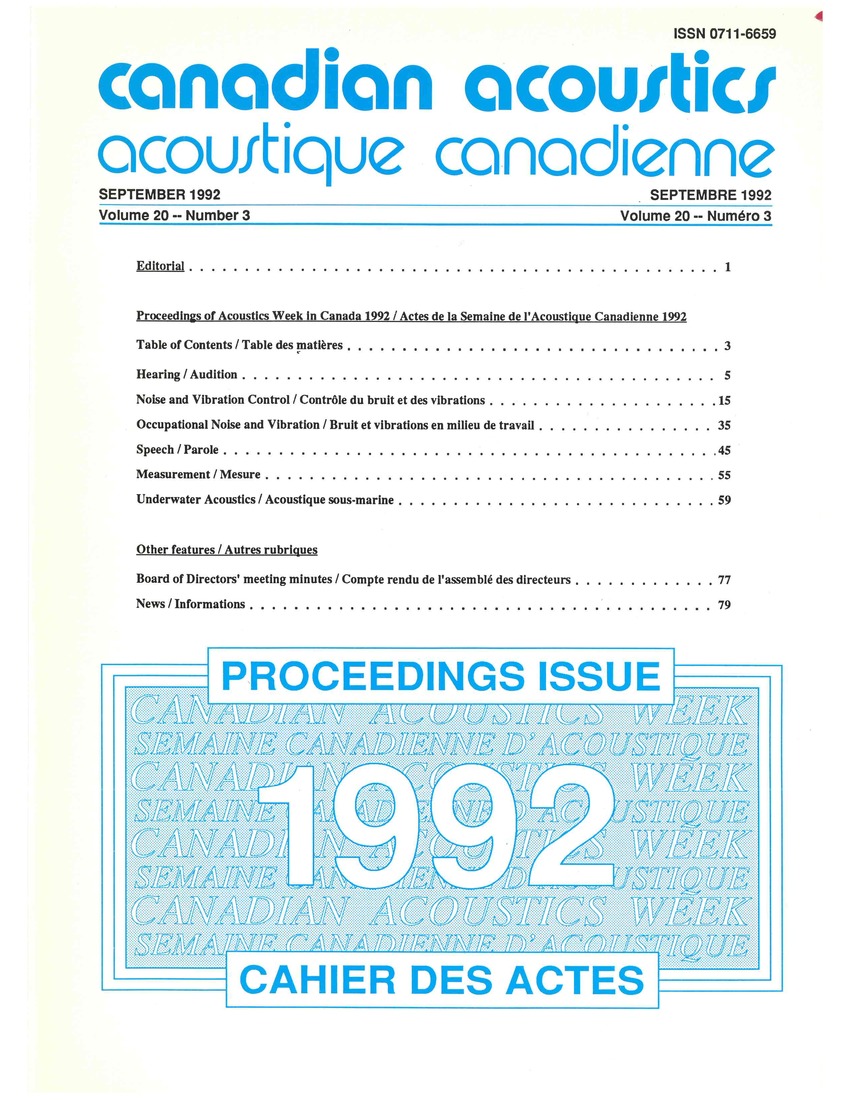Application of FIR digital filters to model human auditory perception of short-time amplitude in low-frequency rapid spectrum change
Keywords:
acoustic filters, hearing, physiological models, speech analysis and processing, FIR digital filters, finite impulse response, SPL amplitude component, linguistic resonant pharyngeal consonants, word-initial CV environments, onset consonant amplitude responses, SPL acoustic responses, glottal excitation, forced response, pharyngeal transmission, natural response, FIR transfer function, glottal source characteristicsAbstract
FIR (finite impulse response) filters are applied using CSL, in the quantization of the SPL amplitude component of linguistic resonant pharyngeal consonants in word-initial CV environments. Only the onset consonant amplitude responses are modelled, with FIR transfer functions corresponding of SPL acoustic responses: glottal excitation (forced response), separate from the pharyngeal transmission (natural response). The FIR transfer function (impulse response) system design has the following properties: pharyngeal transmission interpreted as odd amplitude/even phase; this is differentiated from glottal source characteristics: even amplitude/odd phase. This motivates a DTLTI systemAdditional Files
Published
How to Cite
Issue
Section
License
Author Licensing Addendum
This Licensing Addendum ("Addendum") is entered into between the undersigned Author(s) and Canadian Acoustics journal published by the Canadian Acoustical Association (hereinafter referred to as the "Publisher"). The Author(s) and the Publisher agree as follows:
-
Retained Rights: The Author(s) retain(s) the following rights:
- The right to reproduce, distribute, and publicly display the Work on the Author's personal website or the website of the Author's institution.
- The right to use the Work in the Author's teaching activities and presentations.
- The right to include the Work in a compilation for the Author's personal use, not for sale.
-
Grant of License: The Author(s) grant(s) to the Publisher a worldwide exclusive license to publish, reproduce, distribute, and display the Work in Canadian Acoustics and any other formats and media deemed appropriate by the Publisher.
-
Attribution: The Publisher agrees to include proper attribution to the Author(s) in all publications and reproductions of the Work.
-
No Conflict: This Addendum is intended to be in harmony with, and not in conflict with, the terms and conditions of the original agreement entered into between the Author(s) and the Publisher.
-
Copyright Clause: Copyright on articles is held by the Author(s). The corresponding Author has the right to grant on behalf of all Authors and does grant on behalf of all Authors, a worldwide exclusive license to the Publisher and its licensees in perpetuity, in all forms, formats, and media (whether known now or created in the future), including but not limited to the rights to publish, reproduce, distribute, display, store, translate, create adaptations, reprints, include within collections, and create summaries, extracts, and/or abstracts of the Contribution.


